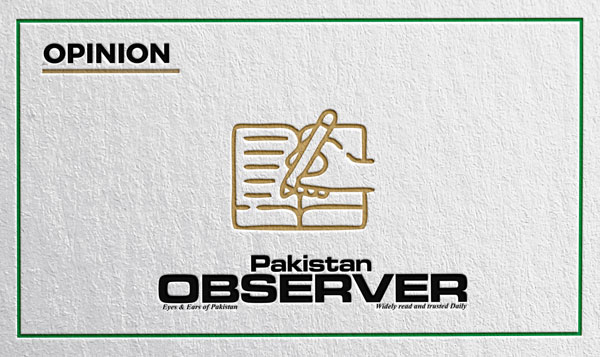Articles and letters may be edited for the purposes of clarity and space.
Healthcare with AI
I am writing to bring your attention to the potential role of AI and Robotics in transforming Pakistan’s healthcare system. Globally, these technologies have already proven their ability in enhancing disease diagnosis, improving precision in surgical processes and overall hospital management system.
By adopting AI and Robotics in Pakistan’s hospitals we can overcome numerous challenges such as Diagnostic errors, Over-crowed hospitals, Data-Management issues, Long surgical procedures, Lack of real-time patient monitoring and much more. In addition to this, using AI and Robotics in healthcare system cannot only improve patient care but also reduce the bur-den on healthcare workers.
Implementing AI-powered tools in diagnosis can reduce the misdiagnoses by giving quick and accurate results for diseases like cancer. Similarly, using robotic tools in surgeries can reduce surgical risks by enhancing precision and minimizing recovery time. We can also bridge the healthcare gap in rural areas by using AI-driven telemedicine platforms, allowing patients to consult with doctors remotely using online video calls and phone calls.
To bring innovation in Pakistan’s healthcare system, it is crucial for policymakers, healthcare providers and research institutions to invest in AI and Robotics. I urge all stakeholders to pri-oritize this transformation approach to elevate our healthcare standards to global levels.
FATIMA SAGHIR
Islamabad.
The future of air warfare
The advancement of artificial intelligence (AI) is set to redefine the future of air warfare, bringing about revolutionary changes in how aerial combat is conducted. From autonomous drones to AI-powered fighter jets, the integration of AI into military aviation will transform the very nature of combat, pushing boundaries and reshaping strategies.
In recent years, AI technology has made significant advances in the realm of aviation. Unmanned aerial vehicles (UAVs) have been deployed for reconnaissance, surveillance and precision strikes. Initially controlled manually, these drones are increasingly becoming more autonomous, driven by AI systems that enable them to make real-time decisions without human intervention. One example of this progress is the AI system known as Hivemind, de-veloped by Shield AI, which can pilot both ground and air vehicles. Hivemind’s success in simulations, including its victory over human pilots in dogfight simulations, demonstrates the impressive potential of AI in air combat.
The future of air dominance lies in the collaboration between manned fighter jets and AI-driven drones. The US Air Force is already testing AI pilots in fighter jets like the F-16 and has plans to scale the technology to the F-22 and F-18. This development promises to ex-tend the lifespan of current fighter jets and reduce operational costs while enhancing their technological capabilities. The use of AI will also allow for more robust and complex mis-sions, providing a strategic advantage in combat scenarios.
MUHAMMAD BILAL
Lahore
National identity, collective legacy
Institutions established by the government play a pivotal role in shaping the future of a na-tion. However, a growing trend has emerged where these institutions are often named after government officials, instead of representing the country as a whole. This practice diverts attention from the larger purpose these institutions should serve—working for the country’s development and betterment.
Institutions should reflect national pride and unity, focusing on the needs and aspirations of the people rather than glorifying individual leaders. When institutions are named after gov-ernment officials, it risks turning them into personal milestones, overshadowing their in-tended purpose. The work done within these organizations should be in the service of the country, not for personal recognition or legacy-building.
By naming institutions based on the country or using names that represent national identity, we ensure that these entities belong to the people. This approach fosters a sense of owner-ship and unity among citizens, creating a shared vision for progress. It also avoids unneces-sary political associations that may undermine the neutrality or inclusiveness of these insti-tutions.
Ultimately, the goal of any government should be to create lasting institutions that contrib-ute to the country’s growth. Naming them in a way that honours the nation, rather than in-dividuals, ensures that they remain focused on their true purpose—serving the people and the country as a whole. This shift in approach would create institutions that embody na-tional pride and are free from political influence or personal milestones.
Royyam Saqib
US










